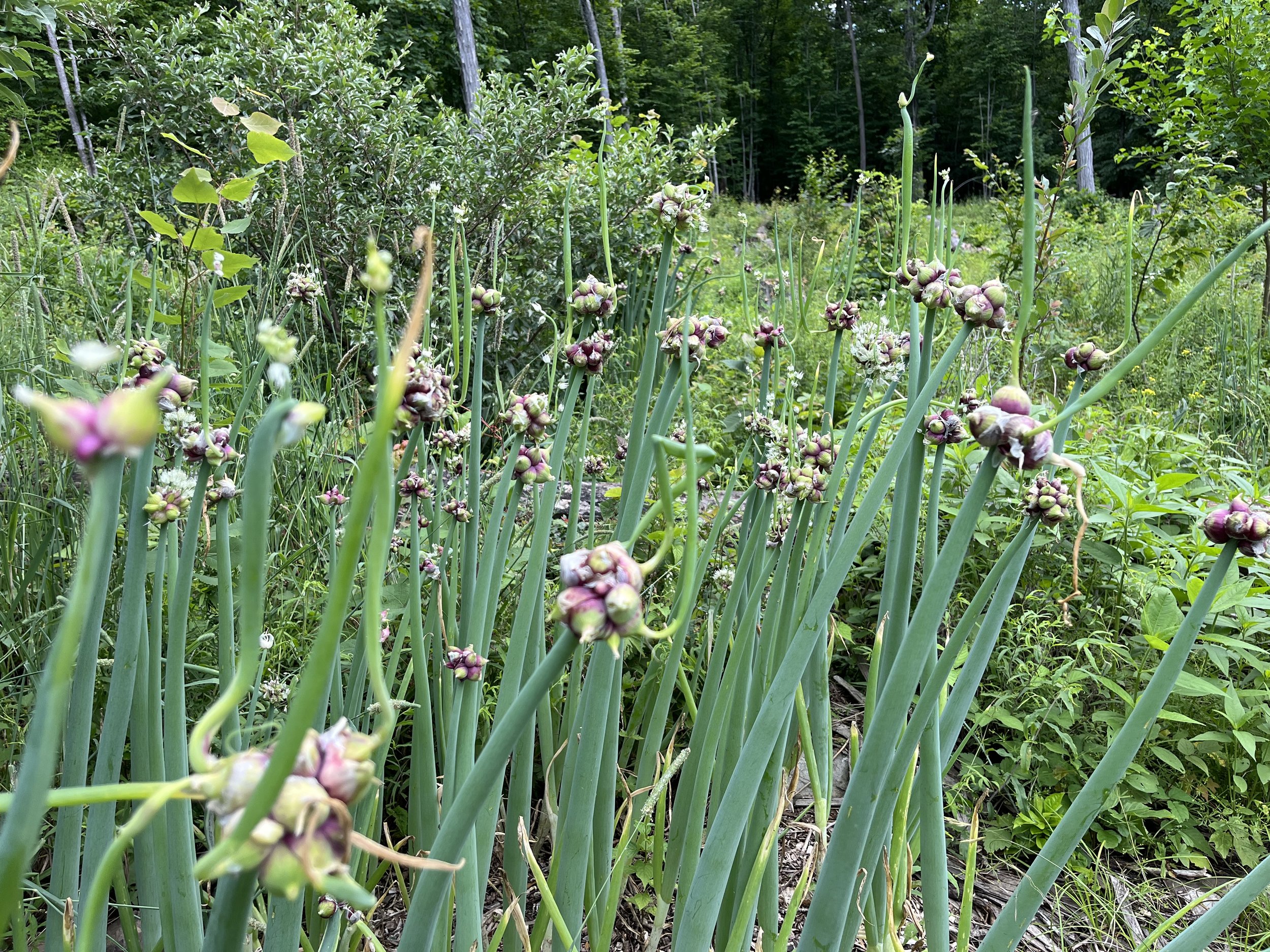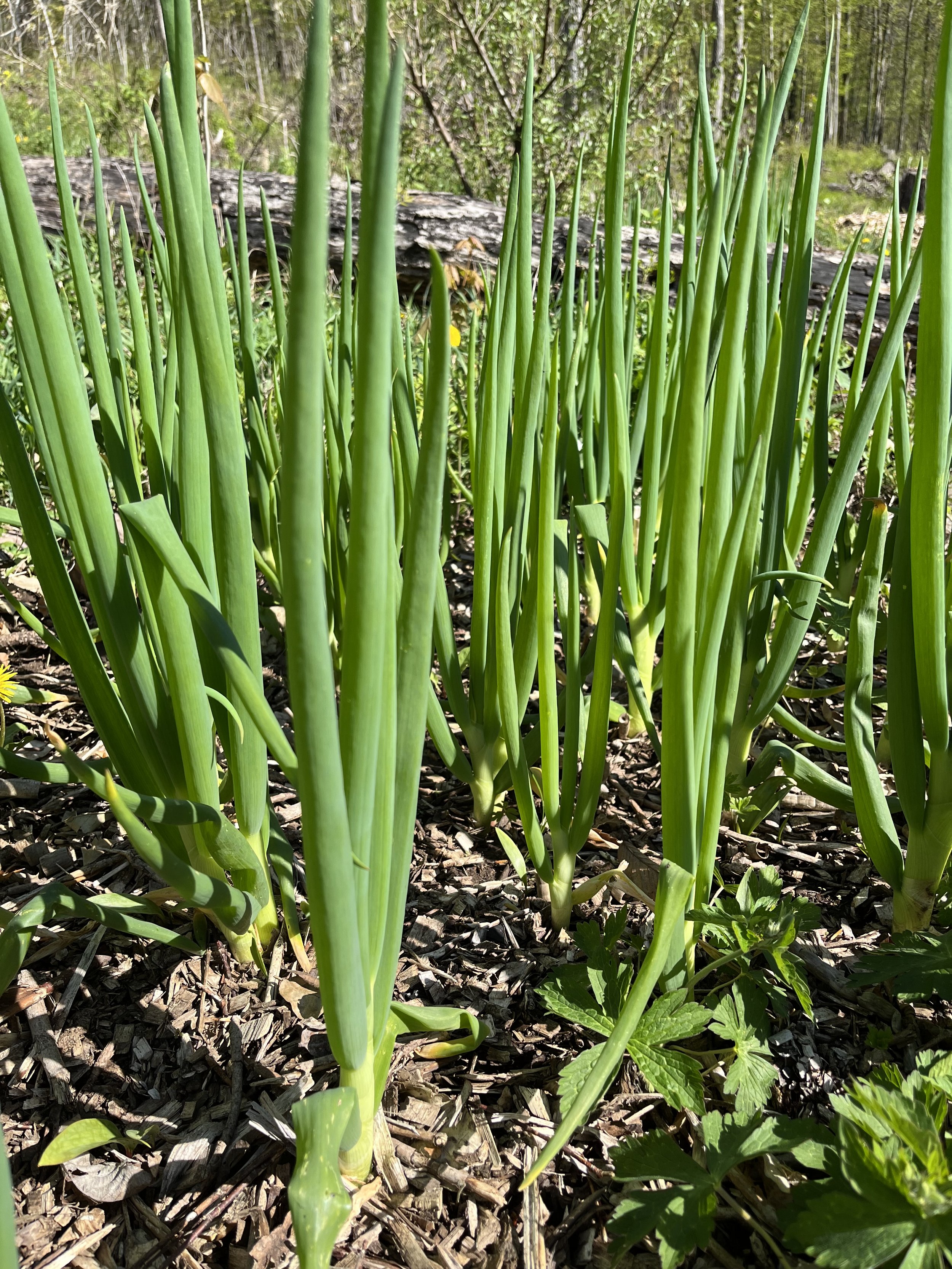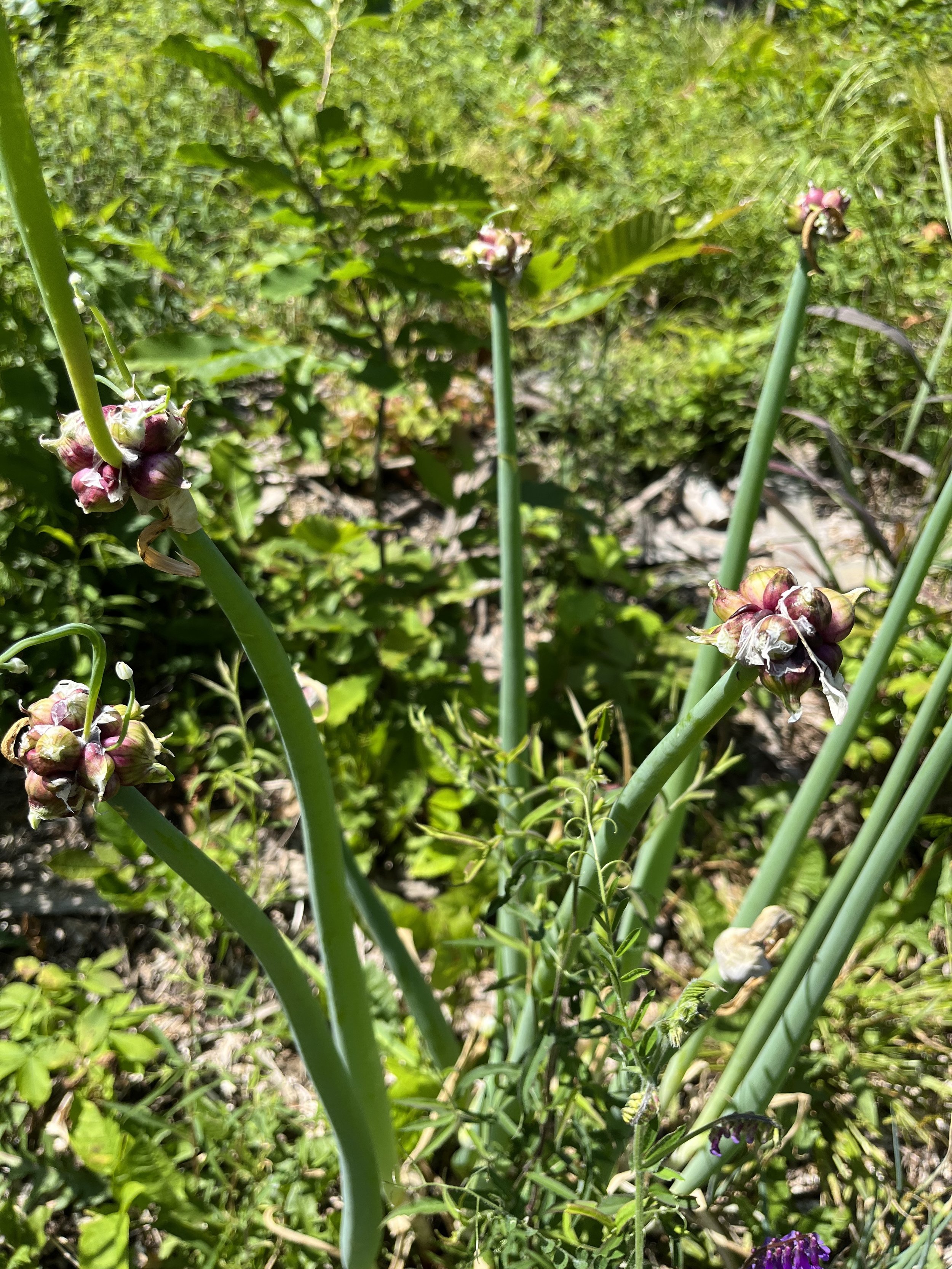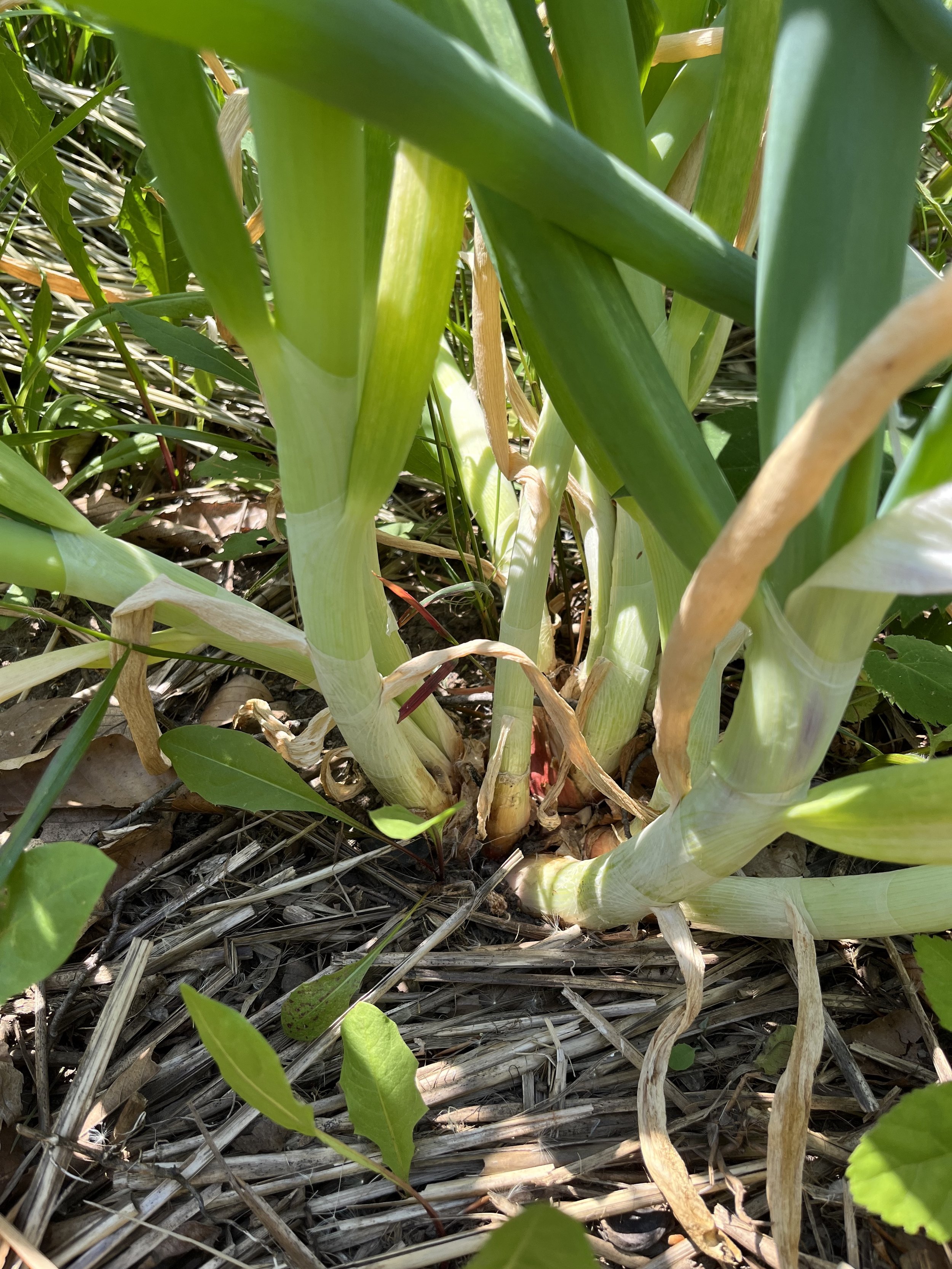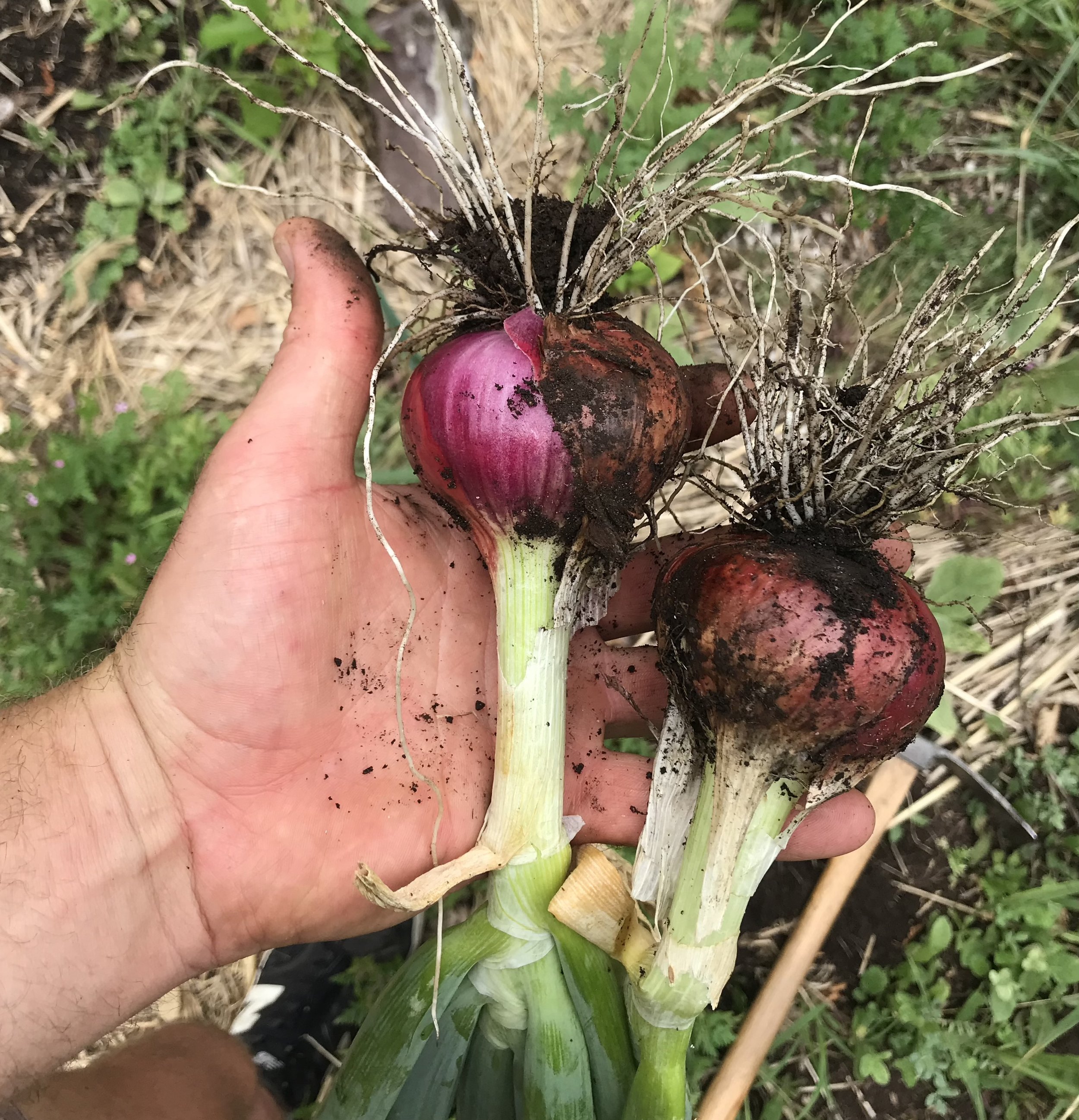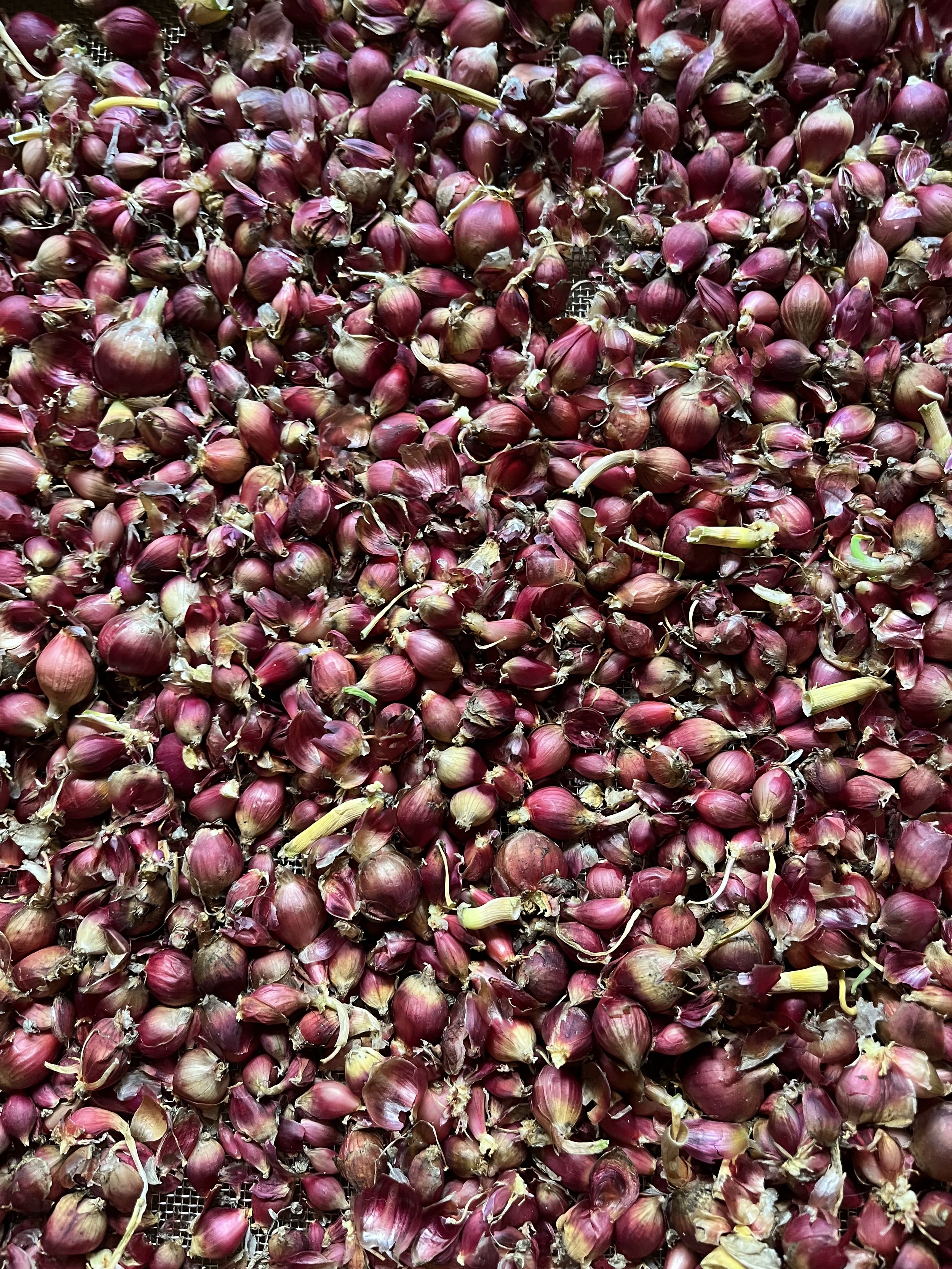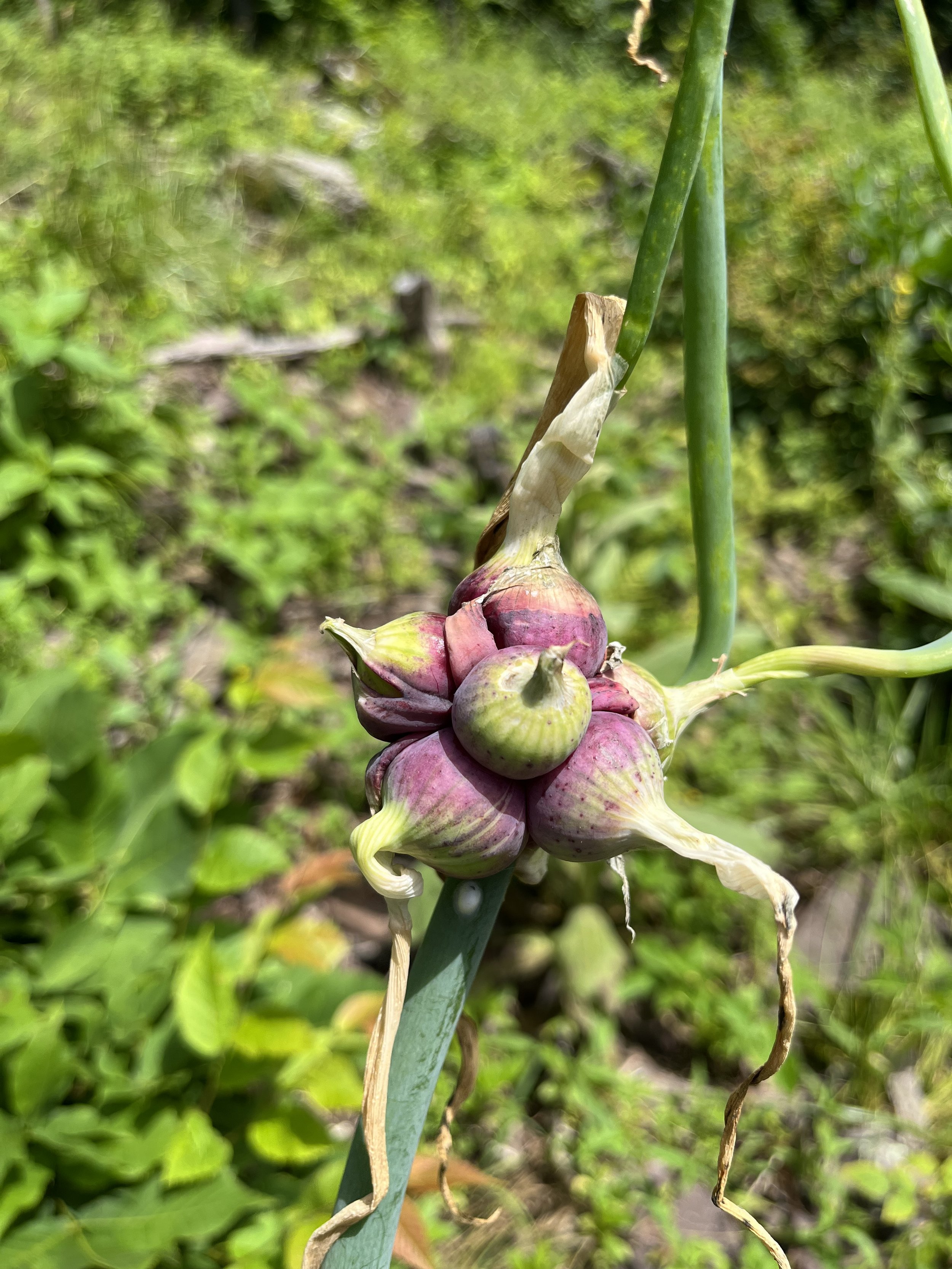Egyptian Walking Onions
5 or more small underground bulbs for planting
Allium proliferum
Over the past several years we have been seeking out allium alternatives to replace the conventional biennial onions we love to eat, but find very burdensome to grow. Starting onions from seed under lights indoors in early spring, then transplanting them one by one is just too much work! Alliums that can be direct seeded or propagated by division/topsets are much easier.
Walking onions can be propagated by division or by planting the 'topsets' and provide a great alternative to standard biennial onions. While you are puttering away starting onion seeds under lights in March, these syper cold hardy onions are already 6” tall and photosynthesizing. They provide some of the first green shoots to emerge in late winter/early spring. As the plant grows it typically produces one or more ‘topsets’ or clusters of clones at the top of its stalk. It also begins to divide underground, giving you options for how you want to propagate it. We generally plant the topsets as soon as they mature in summer. You could dig, store, and eat the underground bulbs, while using the topsets for planting. You could divide and replant the underground bulbs, taking some for yourself, or a combination of these methods. The underground bulb will get larger if the plant is prevented from or does not produce topsets, so you could cut some developing topsets off to grow bigger bulbs. Whichever method you choose, established patches of walking onions should provide plenty of food and plenty of opportunities for propagation. They even produce flowers! (But to my knowledge no viable seed). Buy these once and you shouldn’t have to buy them again. All parts of the plant are edible—underground bulbs, stalks, topsets. Egyptian Walking Onions are captivating, unbothered by cold, weed pressure, and weather extremes, and are easy to grow.
You will receive at least 5 underground bulbs.
5 or more small underground bulbs for planting
Allium proliferum
Over the past several years we have been seeking out allium alternatives to replace the conventional biennial onions we love to eat, but find very burdensome to grow. Starting onions from seed under lights indoors in early spring, then transplanting them one by one is just too much work! Alliums that can be direct seeded or propagated by division/topsets are much easier.
Walking onions can be propagated by division or by planting the 'topsets' and provide a great alternative to standard biennial onions. While you are puttering away starting onion seeds under lights in March, these syper cold hardy onions are already 6” tall and photosynthesizing. They provide some of the first green shoots to emerge in late winter/early spring. As the plant grows it typically produces one or more ‘topsets’ or clusters of clones at the top of its stalk. It also begins to divide underground, giving you options for how you want to propagate it. We generally plant the topsets as soon as they mature in summer. You could dig, store, and eat the underground bulbs, while using the topsets for planting. You could divide and replant the underground bulbs, taking some for yourself, or a combination of these methods. The underground bulb will get larger if the plant is prevented from or does not produce topsets, so you could cut some developing topsets off to grow bigger bulbs. Whichever method you choose, established patches of walking onions should provide plenty of food and plenty of opportunities for propagation. They even produce flowers! (But to my knowledge no viable seed). Buy these once and you shouldn’t have to buy them again. All parts of the plant are edible—underground bulbs, stalks, topsets. Egyptian Walking Onions are captivating, unbothered by cold, weed pressure, and weather extremes, and are easy to grow.
You will receive at least 5 underground bulbs.
5 or more small underground bulbs for planting
Allium proliferum
Over the past several years we have been seeking out allium alternatives to replace the conventional biennial onions we love to eat, but find very burdensome to grow. Starting onions from seed under lights indoors in early spring, then transplanting them one by one is just too much work! Alliums that can be direct seeded or propagated by division/topsets are much easier.
Walking onions can be propagated by division or by planting the 'topsets' and provide a great alternative to standard biennial onions. While you are puttering away starting onion seeds under lights in March, these syper cold hardy onions are already 6” tall and photosynthesizing. They provide some of the first green shoots to emerge in late winter/early spring. As the plant grows it typically produces one or more ‘topsets’ or clusters of clones at the top of its stalk. It also begins to divide underground, giving you options for how you want to propagate it. We generally plant the topsets as soon as they mature in summer. You could dig, store, and eat the underground bulbs, while using the topsets for planting. You could divide and replant the underground bulbs, taking some for yourself, or a combination of these methods. The underground bulb will get larger if the plant is prevented from or does not produce topsets, so you could cut some developing topsets off to grow bigger bulbs. Whichever method you choose, established patches of walking onions should provide plenty of food and plenty of opportunities for propagation. They even produce flowers! (But to my knowledge no viable seed). Buy these once and you shouldn’t have to buy them again. All parts of the plant are edible—underground bulbs, stalks, topsets. Egyptian Walking Onions are captivating, unbothered by cold, weed pressure, and weather extremes, and are easy to grow.
You will receive at least 5 underground bulbs.

